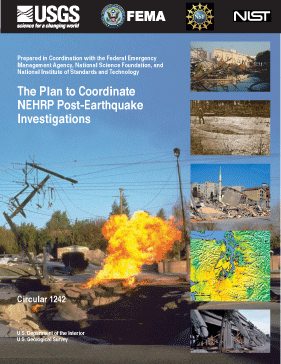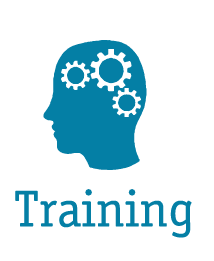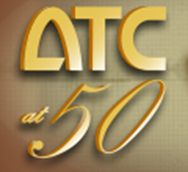ATC Announces Availability Of The Plan To Coordinate NEHRP Post-Earthquake Investigations (USGS Circular 1242) On ATC Web Site
 The Applied Technology Council (ATC) is pleased to announce the immediate availability of a downloadable version of The Plan to Coordinate NEHRP Post-Earthquake Investigations (USGS Circular 1242). Published by the U.S. Geological Survey as USGS Circular 1242, the Plan applies to the coordination of domestic and foreign post-earthquake investigations supported by the National Earthquake Hazards Reduction Program (NEHRP).
The Applied Technology Council (ATC) is pleased to announce the immediate availability of a downloadable version of The Plan to Coordinate NEHRP Post-Earthquake Investigations (USGS Circular 1242). Published by the U.S. Geological Survey as USGS Circular 1242, the Plan applies to the coordination of domestic and foreign post-earthquake investigations supported by the National Earthquake Hazards Reduction Program (NEHRP).
The plan addresses coordination of both the NEHRP agencies -- Federal Emergency Management Agency (FEMA), National Institute of Standards and Technology (NIST), National Science Foundation (NSF), and U. S. Geological Survey (USGS) -- and their partners. The Plan is a framework for both coordinating what is going to be done and identifying responsibilities for post-earthquake investigations. It does not specify what will be done. Coordination is addressed in various time frames ranging from hours to years after an earthquake. The Plan includes measures for (1) gaining rapid and general agreement on high-priority research opportunities, and (2) conducting the data gathering and field studies in a coordinated manner. It deals with identification, collection, processing, documentation, archiving, and dissemination of the results of post-earthquake work in a timely manner and easily accessible format.
The Plan was developed with the assistance of ATC under a USGS Cooperative Agreement established to foster the transfer of earth science research results into engineering design practice (ATC-35 project). The Plan was written by a committee consisting of Thomas L. Holzer (Chair), Roger D. Borcherdt, Craig D. Comartin, Robert D. Hanson, Charles R. Scawthorn, Kathleen Tierney, and T. Leslie Youd. Input for the plan was solicited at a workshop sponsored by ATC, the Earthquake Engineering Research Institute (EERI), and USGS.
The Plan can be downloaded here as a PDF file. It is also available at http://geopubs.wr.usgs.gov/circular/c1232/. For a bound copy please contact: USGS Information Services, Box 25286, Denver, Colorado 80225.




